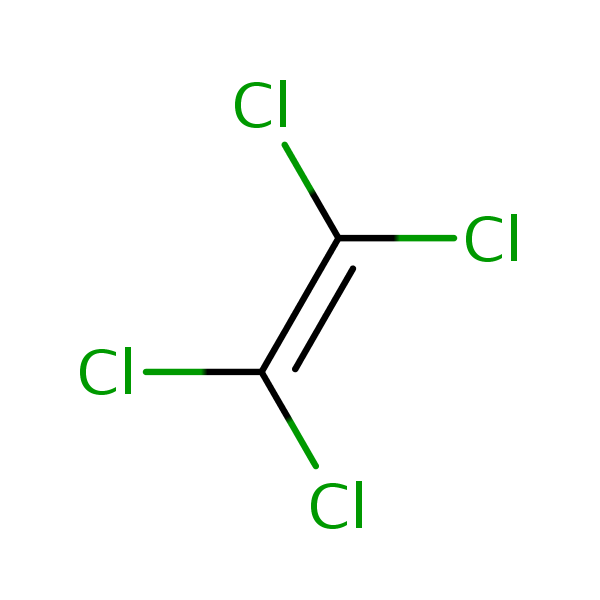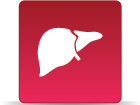Tetrachloroethylene (Perchloroethylene)
CASRN 127-18-4 | DTXSID2021319
- Toxicological Review (PDF) (1077 pp, 144.2 M)
- IRIS Summary (PDF) (38 pp, 350 K)
- Supporting Documents for Tetrachloroethylene
On this page:
Noncancer Assessment
Reference Dose for Oral Exposure (RfD) (PDF) (38 pp, 350 K) Last Updated: 02/10/2012
| System | RfD (mg/kg-day) | Basis | PoD | Composite UF | Confidence |
|---|---|---|---|---|---|
| Nervous, Ocular | 6 x 10 -3 | (See Note) | Medium |
Note: The RfD was derived as a midpoint of two candidate RfDs from studies that reported neurotoxicity in occupationally-exposed adults: 0.0097 mg/kg-day based on changes in reaction time and cognitive effects (Echeverria et al., 1995) and 0.0026 mg/kg-day based on changes in color vision (Cavalleri et al., 1994). See Section I.A.1 of the IRIS Summary for Tetrachloroethylene for more information.
Reference Concentration for Inhalation Exposure (RfC) (PDF) (38 pp, 350 K) Last Updated: 02/10/2012
| System | RfC (mg/m3) | Basis | PoD | Composite UF | Confidence |
|---|---|---|---|---|---|
| Nervous, Ocular | 4 x 10 -2 | (See Note) | Medium |
Note: The RfC was derived as a midpoint of two candidate RfCs from studies that reported neurotoxicity in occupationally-exposed adults: 0.056 mg/m3 based on changes in reaction time and cognitive effects (Echeverria et al., 1995) and 0.015 mg/m3 based on changes in color vision (Cavalleri et al., 1994). See Section I.B.1 of the IRIS Summary for Tetrachloroethylene for more information.
Cancer Assessment
Weight of Evidence for Cancer (PDF)
(38 pp, 350 K)
Last Updated: 02/10/2012
| WOE Characterization | Framework for WOE Characterization |
|---|---|
| Likely to be carcinogenic to humans | Guidelines for Carcinogen Risk Assessment (U.S. EPA, 2005) |
- Following EPA (2005a) Guidelines for Carcinogen Risk Assessment, tetrachloroethylene is "likely to be carcinogenic in humans by all routes of exposure."
- This may be a synopsis of the full weight-of-evidence narrative.
Quantitative Estimate of Carcinogenic Risk from Oral Exposure (PDF) (38 pp, 350 K)
Oral Slope Factor:
2.1
x 10-3
per mg/kg-day
Drinking Water Unit Risk:
6.1
x 10-8
per µg/L
Extrapolation Method: Multistage model (with linear extrapolation from the point of departure (BMDL10), followed by route-to-route extrapolation to the oral route and interspecies extrapolation using the PBPK model of Chiu and Ginsberg (2011).
Tumor site(s): Hepatic
Tumor type(s): Hepatocellular adenomas or carcinomas (JISA, 1993)
Quantitative Estimate of Carcinogenic Risk from Inhalation Exposure (PDF) (38 pp, 350 K)
Inhalation Unit Risk:
2.6
x 10-7
per µg/m3
Extrapolation Method: Multistage model with linear extrapolation from the point of departure (BMCL10), followed by extrapolation to humans using the PBPK model of Chiu and Ginsberg (2011).
Tumor site(s): Hepatic
Tumor type(s): Hepatocellular adenomas or carcinomas (JISA, 1993)
Chemical Documents
Other EPA Information
- Human Health Benchmarks for Pesticides (HHBP). This database provides human health benchmarks for pesticides that may be present in drinking water.
- Office of Pesticide Programs Pesticide Chemical Search. This database provides links to health effects information and registration status for pesticides.
- Chemistry Dashboard. This database provides information on chemical structures, experimental and predicted physicochemical, and toxicity data.
Tumor Sites
Chemical Structure

Synonyms
- Ankilostin
- Antisal 1
- Antisol 1
- Carbon bichloride
- Carbon dichloride
- Czterochloroetylen
- Dee-Solv
- Didakene
- Didokene
- Dow-Per
- Dowclene ec
- ENT 1,860
- Ethene, tetrachloro-
- Ethylene tetrachloride
- Ethylene, tetrachloro-
- Fedal-UN
- NCI-C04580
- Nema
- PCE
- PER
- PERC
- Perawin
- Perchloorethyleen, per
- Perchlor
- Perchloraethylen, per
- Perchlorethylene
- Perchlorethylene, per
- Perchloroethylene
- Perclene
- Percloroetilene
- Percosolv
- Percosolve
- Perk
- Perklone
- Persec
- Tetlen
- Tetracap
- Tetrachlooretheen
- Tetrachloraethen
- Tetrachlorethylene
- Tetrachloroethene
- Tetrachloroethylene
- Tetracloroetene
- Tetraguer
- Tetraleno
- Tetralex
- Tetravec
- Tetroguer
- Tetropil
- 1,1,2,2-Tetrachloroethylene.
- 127-18-4



